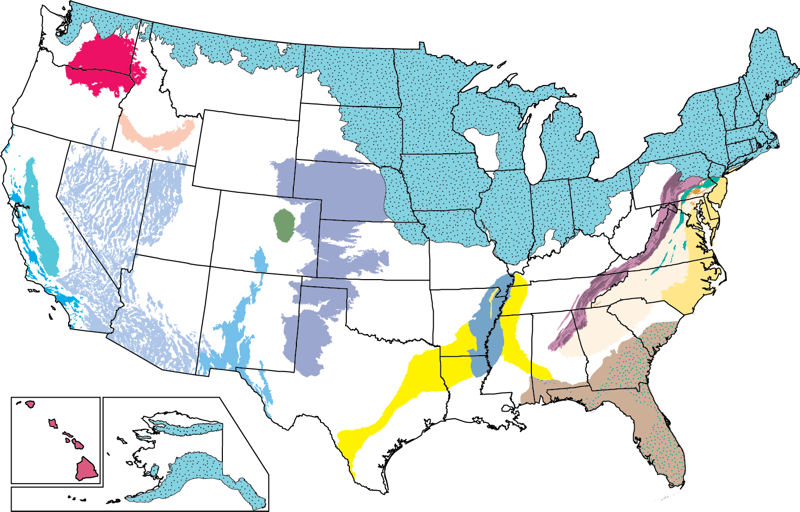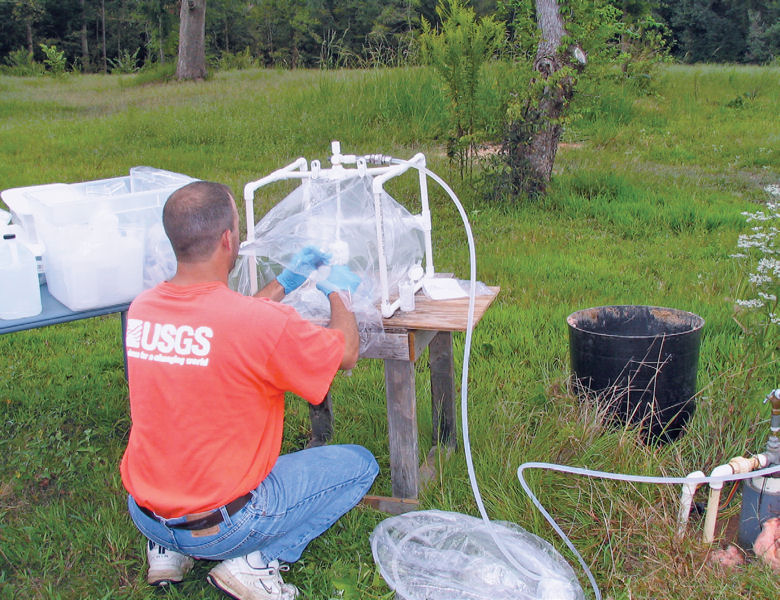
In-depth, regional-scale assessments of groundwater quality focus on the most heavily used principal aquifers in the nation. Groundwater quality in these aquifers is described in nine U.S. Geological Survey circulars. Photo courtesy of the U.S. Geological Survey.
On March 6, the Water Environment Federation (Alexandria, Va.), the Northeast-Midwest Institute (Washington, D.C.), and the National Ground Water Association (Westerville, Ohio) hosted a briefing before U.S. Congress on new U.S. Geological Survey (USGS) findings about the quality of groundwater in the U.S.
During the last two decades, USGS scientists assessed water quality in more than 6600 U.S. wells. Many of the contaminants measured for this assessment — trace elements, pesticides, nutrients, and volatile organic compounds — are not regulated by the Safe Drinking Water Act and pose a risk to public health and aquatic life. Contaminant occurrence data — along with detailed information on geology, hydrology, geochemistry, and chemical and water use — can be used to explain how and why aquifer vulnerability to contamination varies across the country.

For the national groundwater quality report, water samples were collected from more than 6000 domestic, public-supply, and monitoring wells. Photo courtesy of the U.S. Geological Survey.
At the briefing, USGS described the occurrence of contaminants in groundwater, how natural features and human activities can affect groundwater quality, and how models are being used to predict contaminant concentrations in unmonitored areas to inform water-resource management decisions.
Learn more about the USGS and U.S. Department of Interior report, Water Quality in Principal Aquifers of the United States, 1991–2010, in the article “Nature and humans contribute to groundwater contamination” which will appear in the June issue of WE&T.








April 17, 2015
Laws & Regs, WEF Resources & Efforts